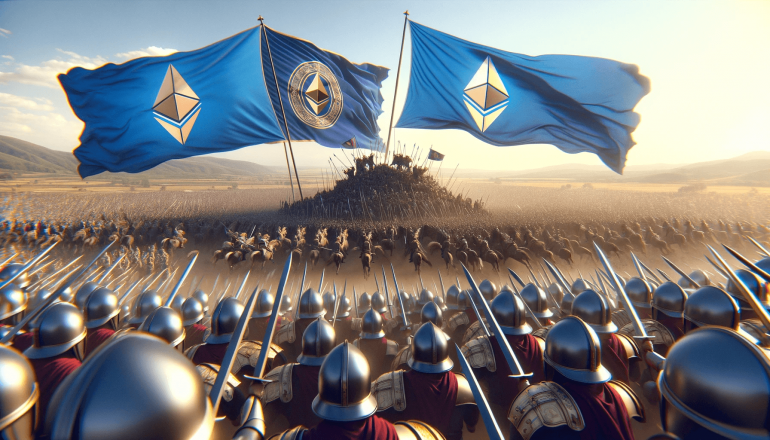Ethereum layer-2's will face an increasingly competitive landscape in 2024: Flipside
A new report from the on-chain data platform points to a fight for lower fees, better user experience, and user attention.

Share this article
Ethereum layer-2 blockchains (L2) could start a war on which one of them offers the lowest cost fees in 2024, according to a Jan. 25 report by on-chain data platform Flipside. This dispute could happen if a bull run starts in 2024, raising transaction costs for Ethereum and making users look for alternatives.
Moreover, a more competitive environment for L2s could result in smaller margins for the projects, better user experience, and renewed interest in those chains’ governance tokens, such as OP, ARB, and POL. Ultimately, Flipside analysts believe that this war will accelerate the adoption of EVM-compatible blockchains.
EVM stands for Ethereum Virtual Machine, which can be simply understood as the software translating and executing smart contracts commands. Thus, the existence of a decentralized application like Uniswap or Aave needs an EVM to process the information sent from their smart contracts.
Another catalyst for a wider Ethereum L2 adoption is the upgrade Dencun, set to happen in 2024’s first semester, which will introduce ‘blobs’. Blobs are transactions capable of handling large amounts of data and can be attached to Ethereum’s blocks. As a result, L2 will be able to use those blobs to store transaction data, freeing up more space in Ethereum’s blocks and raising L2’s throughput.
New market participants
Flipside’s report also mentions expectations around more blockchains being launched in 2024 than during the previous year. This could mean that more blockchains with specific use cases will capitalize on each network’s advantages.
Those new chains will emerge to meet new and existing demand, and Ethereum L2s might have to fight for users’ interest, since there’s still an appetite for new blockchains, according to Flipside.
Besides, the report underscores that new blockchains were still relatively new during the bull run seen between 2020 and 2021. However, those chains have made significant developments in the last two years regarding cross-chain interactions and transfers, making it easier for Web3 users to interact with multiple chains.
While most crypto users will continue to engage with one single chain, the report points out, “the overall crypto community will become more mobile, flexible, and willing to move across different chains to capitalize on various opportunities”. Therefore, on top of their war on Ethereum’s ecosystem, L2s may face more external competition this year.
Share this article
